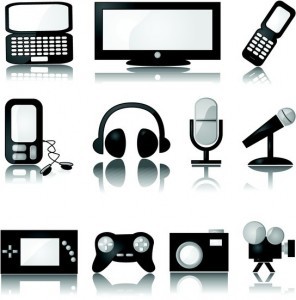 Participating in or running a meeting where delegates represent different languages and cultures is always a challenge. After all, even in our native language we sometimes do not understand each other.
Participating in or running a meeting where delegates represent different languages and cultures is always a challenge. After all, even in our native language we sometimes do not understand each other.
Additional complications may occur if delegates deliver presentations and comments in a foreign language or if their words are interpreted simultaneously and consecutively.
However, careful planning may to a significant degree reduce miscommunication and possible misunderstanding.
Before the Meeting:
- Due diligence in hiring conference interpreters. Your conference or meeting will only be as good as the quality of interpretation. Everything else is secondary, and it is better to buy second rate coffee for your coffee breaks then second rate interpreters. See our Due Diligence recommendations at the bottom of this page.
A reliable interpretation services agency will be able to take care of all your language interpretation requirements.
 Start preparing early. Professional interpreters may spend many days before the actual conference to read background information, study terminology, research presentation topics. They need to have as much information about your event from you as possible.
Start preparing early. Professional interpreters may spend many days before the actual conference to read background information, study terminology, research presentation topics. They need to have as much information about your event from you as possible.
- Make sure that your interpretation services provider has: the conference agenda, speakers bios, PowerPoint Presentations, bilingual glossaries if any, etc. The more information the better.
- If you are concerned about confidentiality, remember that professional interpreters are bound by strictest ethics codes and a Non-Disclosure Agreement is always an option.
- Consider a pre-conference briefing with interpreters for last minute updates.
- Inform speakers that the conference will use language interpretation. Encourage speakers not to read their presentations but to ad lib or use bullets.
- Make sure that all critical documents and definitely the agenda are translated before the conference into all the working languages.
During the Meeting:
If you are a participant:
- Microphone discipline: if it was not said into a microphone it was not said at all. Simultaneous interpreters are only able to translate what they hear. See our microphone manners recommendations at the bottom of this page.
 Cognitive issues: some participants will speak in a language that is their foreign language. Sentences are about 30% longer, grammar, stress and intonation may be off, and some delegates have limited vocabulary. Research shows that there is a subconscious tendency in native speakers to judge foreign accent as less trustworthy. The heavier the accent, the less we tend to believe that person.
Cognitive issues: some participants will speak in a language that is their foreign language. Sentences are about 30% longer, grammar, stress and intonation may be off, and some delegates have limited vocabulary. Research shows that there is a subconscious tendency in native speakers to judge foreign accent as less trustworthy. The heavier the accent, the less we tend to believe that person.
Unless the person makes absolutely no sense, suspend your judgement and try to see the message, even though the message may sometimes be worded awkwardly. Think of a sequence of guiding questions to understand the speaker better.
- If you do not understand a speaker or a question, never ask to “repeat” it, because you will be getting the same words. Ask to “restate”, “rephrase” or “clarify” “for my own understanding.”
 Do not stand, sit or congregate in front of simultaneous interpretation booths. Interpreters need a direct view of the speakers at all times. Do not have loud conversations in the vicinity of the booths.
Do not stand, sit or congregate in front of simultaneous interpretation booths. Interpreters need a direct view of the speakers at all times. Do not have loud conversations in the vicinity of the booths.
- Remember (especially in political, legal and business context) that during the meeting interpreters are bound to translate all statements made at the negotiations table by all parties. If your statement is meant only for your own delegation, you can say to the interpreter: “It is not for translation” or “We would like to have an internal discussion now” and proceed with your statement.
- The interpreter shall inform the other delegation about it and shall stop the interpretation. Remember, however, that the other delegation may include bilingual persons who will understand your conversation and it may be best to take a break instead and discuss sensitive issues offline.
- The interpreter shall never disclose any content of such online or offline conversations either to you about the other party or to the other party about you – it is not a part of interpreter’s job even if he is paid by you. It is required by the interpreter’s code of ethics, so do not place the interpreter in an awkward position by asking him or her what the other party talked about.
If You are a Speaker:
 If possible use your native language because then you will concentrate on the content not on how to express it and your message will sound better in professional interpretation.
If possible use your native language because then you will concentrate on the content not on how to express it and your message will sound better in professional interpretation.
- Brief your interpreters before your presentation, give them the text of your speech if you have it, let them know what specialized terms you will be using. Names and acronyms are particularly important.
- Speak into the microphone but not too close to it.
- Try not to read your text. Impromptu speech helps you establish better rapport with your audience. If you still want to read it, you must provide a copy to the interpreters before the meeting or the session.
- If you have audio in your PowerPoint slides, make sure that your computer is connected directly into the PA system and does not play the audio from your computer’s speaker into the microphone in the room. In the latter case audio quality will be too bad for simultaneous interpretation. Conference audio technician should be able to help you with this.
 If you have a script of your video, give it to the interpreters as well.
If you have a script of your video, give it to the interpreters as well.
- If you are interpreted simultaneously, do not make pauses to “help” the interpreters.
- If you refer to a particular page, however, do make a pause to be able to give interpreters and delegates time to find it.
- Quote numbers and lists slowly and distinctly.
- Explain an acronym if you use it for the first time.
- Some bilingual speakers try to wear a headset to listen to the simultaneous interpretation of their own speech. Do not do it. Practically all give up very quickly, because speaking and listening and monitoring interpretation is too much of a cognitive challenge for someone who is not trained to do it and it will distract you. You will simply start making pauses in your own speech to listen to simultaneous interpretation.
-
 Remember about your rate of delivery. Contrary to common advice, you do not have to speak slowly, however, too fast is counterproductive too. 150-170 words per minute is what the average rate of delivery for speakers of English in the USA is, so be at the lower end of this range.
Remember about your rate of delivery. Contrary to common advice, you do not have to speak slowly, however, too fast is counterproductive too. 150-170 words per minute is what the average rate of delivery for speakers of English in the USA is, so be at the lower end of this range.
What is important for you as a speaker is establishing rapport with your audience, being yourself and getting your message across.
- In consecutive interpretation it is very bad form to correct the interpreter by saying: “Wrong translation”, especially if you are in the audience. A more graceful way to resolve this could be to restate the sentence that you think may have been miscommunicated when looking at the interpreter and see if it is handled better the second time. Or ask a clarification question.
- Remember that in consecutive interpretation there is an initial period when you and the interpreter establish turn taking routine. Consecutive interpreters can handle long passages, however, it is in your best interests to make your presentation more interactive by not speaking in very long paragraphs. Discuss turn taking with your interpreter beforehand.
 If you have PowerPoint slides and are together with the interpreter near the screen in front of your audience you may show something in the slides with a pointer. The interpreter during the interpretation should point at the same items on the screen. Therefore, do not move to the next slide before the interpreter finished the interpretation.
If you have PowerPoint slides and are together with the interpreter near the screen in front of your audience you may show something in the slides with a pointer. The interpreter during the interpretation should point at the same items on the screen. Therefore, do not move to the next slide before the interpreter finished the interpretation.
- You may also chose to show these items yourself during the interpretation, but it is only recommended if you are bilingual and understand what the interpreter is saying, otherwise, you may show these items at the wrong time during the interpretation. If the interpreter accidentally did not point at the correct item, you may always point at it again.
If you Chair a Meeting:
- Bilingual and multilingual meetings require even more clear and defined procedures, protocols, and explanations from the chair.
 At the beginning of your meeting announce that the meeting will be interpreted (simultaneously or consecutively). State the working languages of the conference. For simultaneous interpretation announce which channel is assigned to which language.
At the beginning of your meeting announce that the meeting will be interpreted (simultaneously or consecutively). State the working languages of the conference. For simultaneous interpretation announce which channel is assigned to which language.
- Remind those delegates who have not yet taken receivers for simultaneous interpretation to pick them up and say where they can do it. Otherwise you risk half the audience standing up and running to get receivers when the first foreign language presentation starts.
- Instruct delegates to report any technical issues immediately e.g. if you stopped hearing the interpretation in your headset and who to report it to. Usually it is the conference audio technician in charge of simultaneous interpretation equipment. (The technician usually monitors all the channels for sound quality issues, but if your the receiver battery is low, you need to report it to him and get a new receiver). If no one can hear simultaneous interpretation, stop the meeting until it is resolved.
- Instruct delegates to speak into the microphones at all times. Discuss microphone setup with your conference technician to see if you need to manage microphones or it will be done automatically.
Remember that as the chair of a meeting you are in charge of turn taking and microphone discipline: interpreters are unable to translate two people speaking at the same time or off mic remarks.
 Ask the person to say the comments into the microphone or repeat the comment or the question yourself. If tabletop microphones have to be turned on and off manually by delegates, remind them that only one microphone may be on and they must turn off the microphone when they are done speaking. During the conference ask delegates to turn microphones on and off as needed.
Ask the person to say the comments into the microphone or repeat the comment or the question yourself. If tabletop microphones have to be turned on and off manually by delegates, remind them that only one microphone may be on and they must turn off the microphone when they are done speaking. During the conference ask delegates to turn microphones on and off as needed.
- Assign microphone pages if needed. See our post on microphone discipline at the bottom of this page.
- To avoid feedback and interference, ask delegates to keep their headsets and mobile phones away from PA system microphones and silence their phones.
- While it is commendable to ask delegates once at the beginning of a conference to speak clearly and slowly, not many heed the advice. It is more beneficial to remind about it during the conference every time you encounter a very fast speaker.
 You do not have to introduce interpreters by name. If participants introduce themselves at the beginning of a smaller meeting, consecutive interpreters are not allowed by protocol to introduce themselves either, because they are not participants. As the chair of the meeting you may, however, ask consecutive interpreters to introduce themselves and many chairs choose to do so in smaller business meetings where all delegates introduce themselves.
You do not have to introduce interpreters by name. If participants introduce themselves at the beginning of a smaller meeting, consecutive interpreters are not allowed by protocol to introduce themselves either, because they are not participants. As the chair of the meeting you may, however, ask consecutive interpreters to introduce themselves and many chairs choose to do so in smaller business meetings where all delegates introduce themselves.
In this case the interpreter must only state his or her name and job title.
- Remember that there will always be a small time lag between the final words of a presentation and the end of its simultaneous interpretation into another language. Make a small pause before you start speaking. That is particularly important for open discussions and Q&A sessions because very rapid turn taking may be hard to interpret and understand even if interpreted correctly.
 Make sure that you have a procedure to distribute updates and documents to all interpreters in all the working languages if available. Agree with your interpretation services provider who the contact person will be to email or send updates and documents to.
Make sure that you have a procedure to distribute updates and documents to all interpreters in all the working languages if available. Agree with your interpretation services provider who the contact person will be to email or send updates and documents to.
- If you make a copy of a document for distribution to delegates, make sure that you have made additional copies for every interpreter. If needed, assign an assistant who would be in charge of updating the interpreter team and providing documents to them in real time before and during the meeting. Make sure interpreters received documents before discussing them.
- Assign a person to record meeting minutes accurately. Remember to track action items and include them at the end of the minutes. You may have to have the minutes translated later.
 Remember that it is best to announce a break than to discuss a sensitive issue with everyone present. See comment above. Use the phrase “It is not for translation” if you want the interpreter not to interpret a particular statement. Remember that interpreters are neutral and impartial and are on nobody’s “side” including yours.
Remember that it is best to announce a break than to discuss a sensitive issue with everyone present. See comment above. Use the phrase “It is not for translation” if you want the interpreter not to interpret a particular statement. Remember that interpreters are neutral and impartial and are on nobody’s “side” including yours.
- It is customary (especially in diplomatic settings) although not required to thank the interpreters after the meeting in your closing remarks.
- After the meeting you may want to provide your feedback to interpreters, debrief, or write a thank you note.
There is no guarantee that everything will always run smoothly, but what matters is that you have used best practices, minimized uncertainly and it will – in turn – make you more confident and productive as a meeting participant, chair or organizer.

